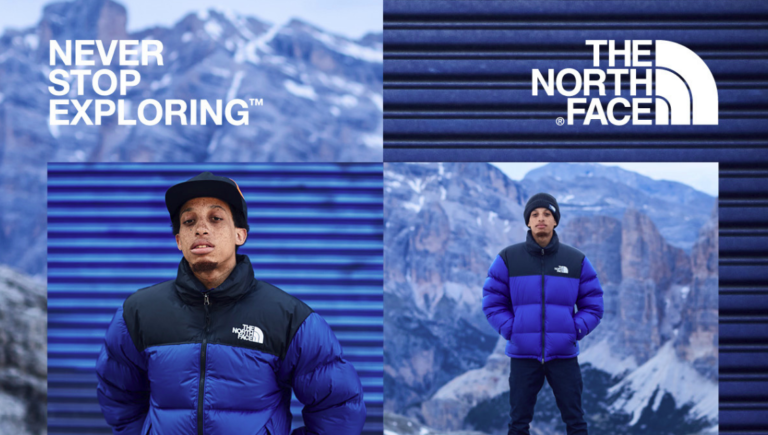The North Face
Our Rating: 4 Stars - Good
Price: $ $ $ $
Country of origin: United States
Official brand website: Visit

Exploring The North Face: A Sustainable Journey Towards a Greener Tomorrow
The North Face, known for its outdoor clothing and equipment, has set its sights on sustainability. But is it truly a brand that prioritizes eco-friendliness and ethical practices? Let’s take a closer look at how The North Face is making strides towards a greener future without compromising on style and quality.
From Humble Beginnings to Outdoor Icon
The North Face, founded in 1966 by Douglas Tompkins and Susie Tompkins Buell, has a rich history rooted in outdoor exploration. Initially a small mountaineering retail store in San Francisco, the brand quickly gained recognition for its durable, high-performance gear.
Over the years, The North Face expanded its product range and became synonymous with adventure and exploration. Today, it stands as a global leader in outdoor apparel and equipment, combining innovation with a commitment to environmental and social responsibility.
Prioritizing Eco-Friendly Materials

Image Credit: theecobhan.com
The brand’s sustainability journey is firmly grounded in material innovation. By 2025, The North Face has set a goal to ensure that all primary materials, including polyester, cotton, and nylon, are either recycled, responsibly sourced, or regeneratively grown. The commitment to achieving this extends to apparel by 2025 and extends to footwear and equipment by 2030.
Greenhouse Gas Emissions Reduction on the Horizon
In line with its commitment to combat climate change, The North Face has established science-based targets to curtail greenhouse gas emissions throughout its operations and supply chain.
The North Face is not only revolutionizing materials but also actively reducing greenhouse gas emissions across its entire supply chain. Collaborating closely with key suppliers, the brand is dedicated to aiding them in halving their Scope 1 and 2 emissions by 2030. This isn’t just about transforming its own practices; it’s a holistic effort aimed at reshaping the industry at large.
While this goal is indeed commendable, the brand should provide clear evidence of its progress in meeting these targets. Transparency and accountability are the cornerstones of driving significant change within the industry.
Saying Goodbye to Single-Use Plastic
In response to the pressing global plastic waste issue, The North Face is resolute about change. The brand is committed to eliminating single-use plastic packaging by 2025. Furthermore, for all types of packaging, be it plastic or paper, the brand is proactively reducing waste and ensuring that new materials employed are more recyclable.
This commitment extends beyond the brand, encompassing a broader vision for a sustainable future. The North Face isn’t just exploring the great outdoors; it’s pioneering sustainable possibilities for the entire industry.
Bluesign-Certified Sustainability
A significant proportion of The North Face’s fabrics bear the coveted Bluesign certification, highlighting its unwavering dedication to responsible and sustainable manufacturing processes.
This certification provides consumers with the assurance that the brand adheres to stringent environmental and social standards across its supply chain.
By prioritizing Bluesign-certified materials, The North Face underscores its commitment to minimizing the environmental impact of its products from inception to completion.
Tackling Packaging Responsibility
While The North Face displays promise in multiple sustainability aspects, it currently lacks evidence of robust efforts to minimize packaging waste. Recognizing the substantial role packaging plays in our global waste problem, it is vital that the brand takes strides to address this issue.
By adopting innovative and eco-friendly packaging solutions, The North Face can further elevate its sustainability credentials.
Promoting Fair Labor Practices

Image Credit: triplepundit.com
The North Face has made significant strides in ensuring fair labor practices within its supply chain, earning a ‘it’s a start’ labor rating. Some segments of its supply chain are Bluesign certified, reflecting the brand’s commitment to worker welfare.
Additionally, The North Face scored 61-70% in the 2021 Fashion Transparency Index, showcasing its dedication to disclosing information related to supplier and worker protection during the COVID-19 pandemic.
However, there is currently no evidence that The North Face ensures the payment of a living wage in most of its supply chain. To truly prioritize fair labor practices, the brand should work towards bridging this gap.
Championing Animal Welfare
The North Face’s commitment to animal welfare is laudable. The brand boasts a formal animal welfare policy in line with the Five Freedoms and has effective mechanisms in place for its implementation and enforcement.
Although leather is part of The North Face’s product offerings, it refrains from using fur, exotic animal skin, exotic animal hair, or angora. The brand sources wool from non-mulesed sheep, underscoring its dedication to ethical sourcing.
Moreover, The North Face employs down certified by the Responsible Down Standard and has established traceability measures for most animal products in its supply chain.
Frequently Asked Questions
Absolutely. They’re revolutionizing their materials, aiming for 100% recycled or responsibly sourced main materials by 2025 for apparel and 2030 for footwear and equipment. They’re also committed to reducing greenhouse gas emissions in their supply chain.
By 2030, they plan to cut their supply chain’s greenhouse gas emissions in half by working with key suppliers. Additionally, they’re determined to eliminate single-use plastic packaging by 2025 and reduce plastic and paper packaging waste.
They’re transforming materials, with a goal for 100% sustainable main materials in their products by 2025 for apparel and 2030 for footwear and equipment. This step reduces their environmental footprint while ensuring sustainability is at the heart of their products.
They’re focused on slashing greenhouse gas emissions. By 2030, they’re determined to cut supply chain emissions in half and are collaborating with key suppliers to achieve this goal, influencing the whole outdoor industry towards a greener future.
They’re taking a stand against plastic waste, aiming to eliminate single-use plastic packaging by 2025. They’re also working on reducing all forms of packaging, making sure the materials used are more recyclable.
They’re making significant progress in fair labor practices, earning a ‘it’s a start’ rating. They’re committed to fair wages and good working conditions. In animal welfare, they have a formal policy, to avoid using fur, exotic animal materials, and angora.
They source wool from non-mulesed sheep and emphasize the use of responsible down. Their focus on fair labor and animal welfare demonstrates their dedication to making the outdoor industry more sustainable and humane
In Conclusion
The North Face is lighting the path to sustainability in the outdoor industry. Sure, there’s room for growth, like tackling packaging waste and ensuring fair wages, but their achievements in eco-friendly materials, greenhouse gas reductions, fair labor practices, and animal welfare are truly commendable.
They’re the torchbearers guiding us towards a greener, more responsible outdoor industry. While we applaud their progress, it’s a journey we’re all embarking on together, one step at a time. So, let’s keep exploring and protecting the great outdoors hand in hand.







